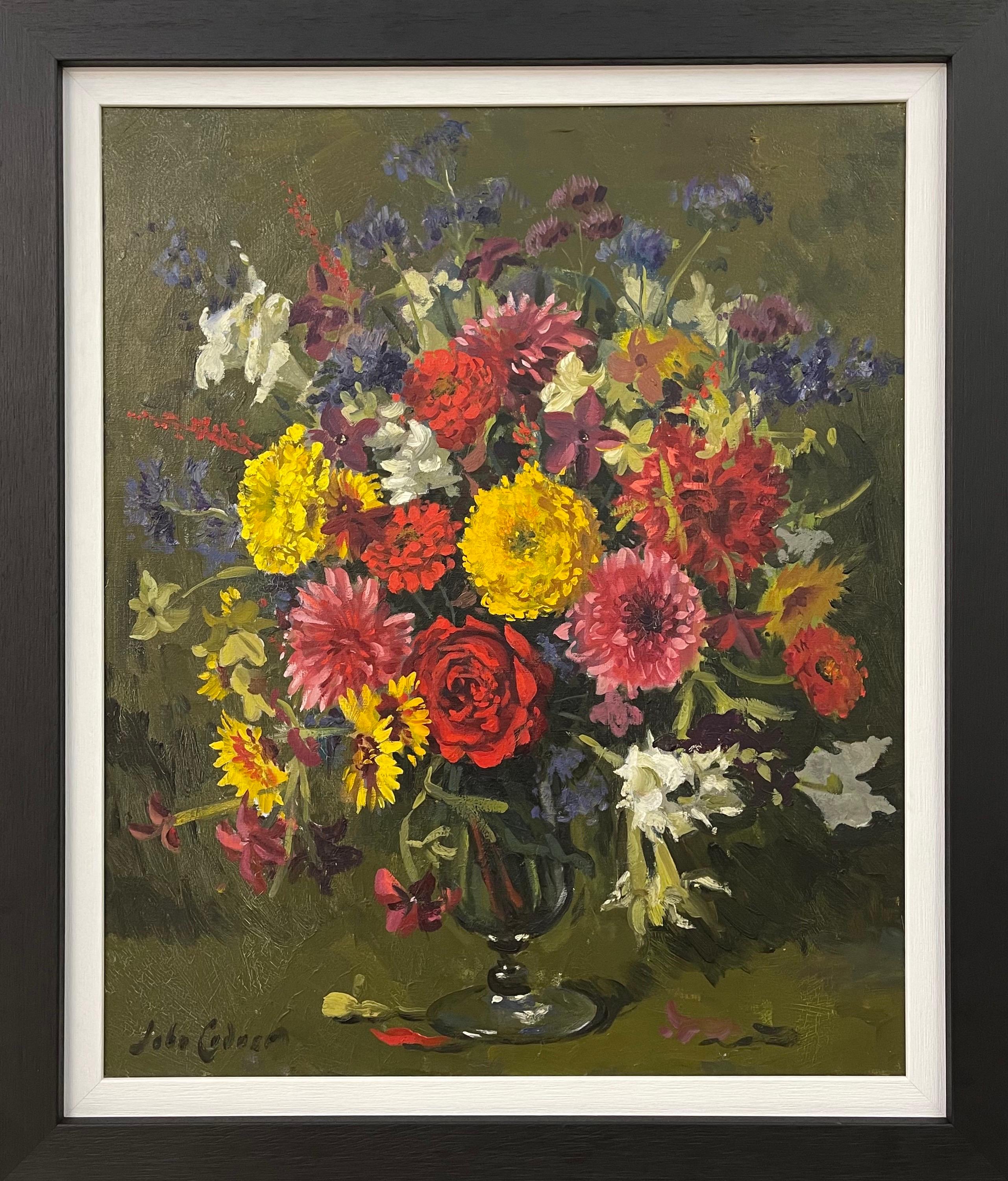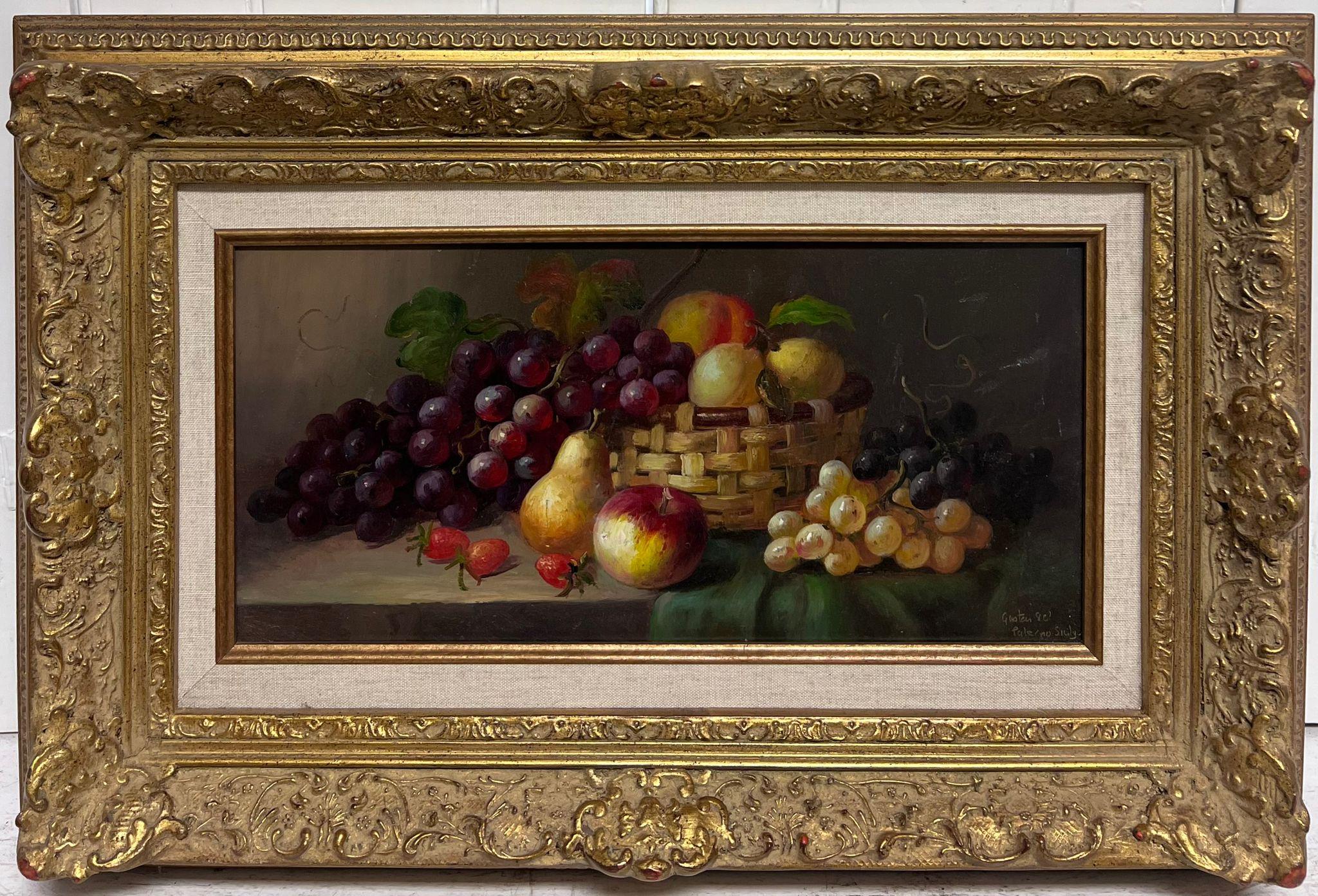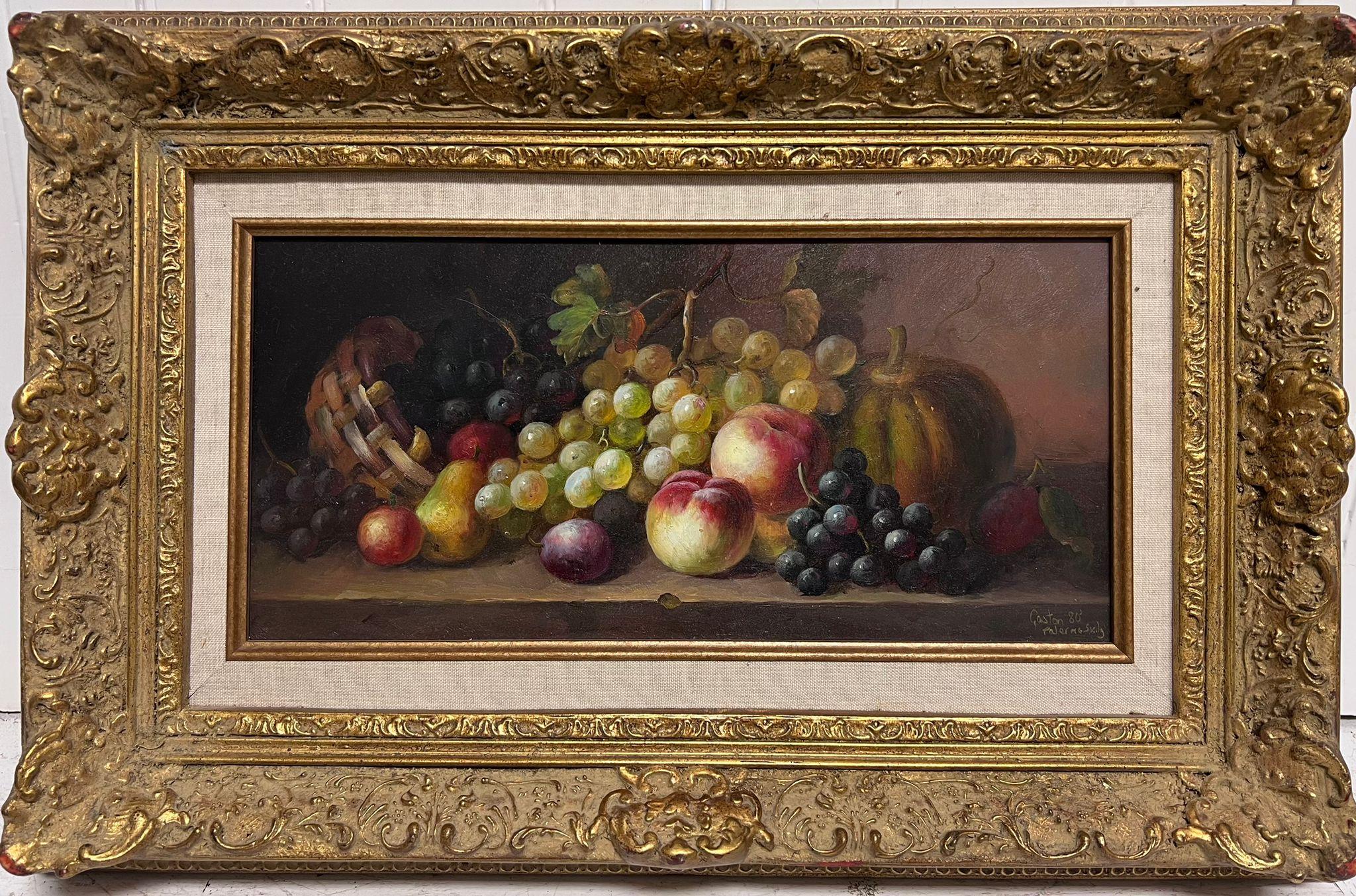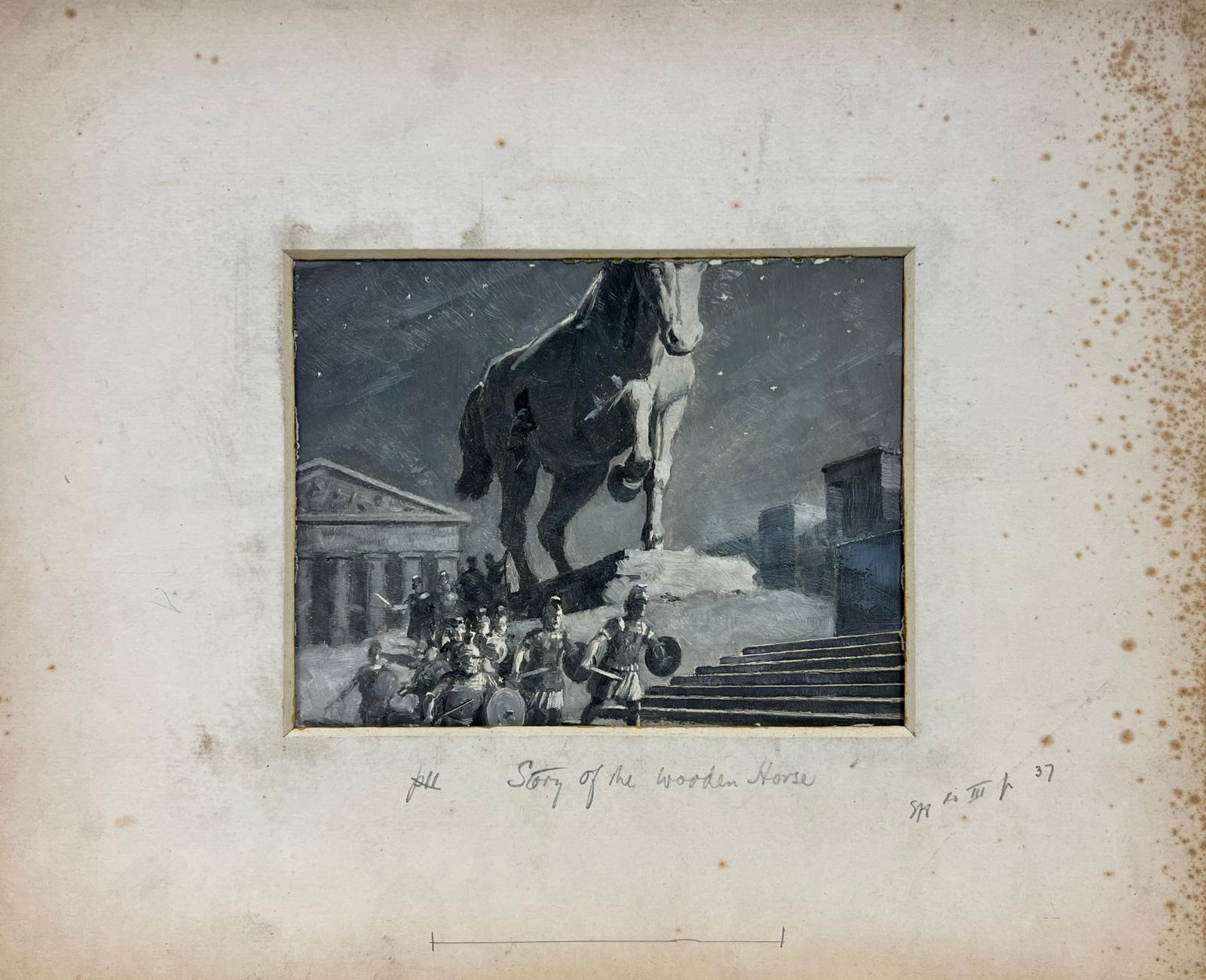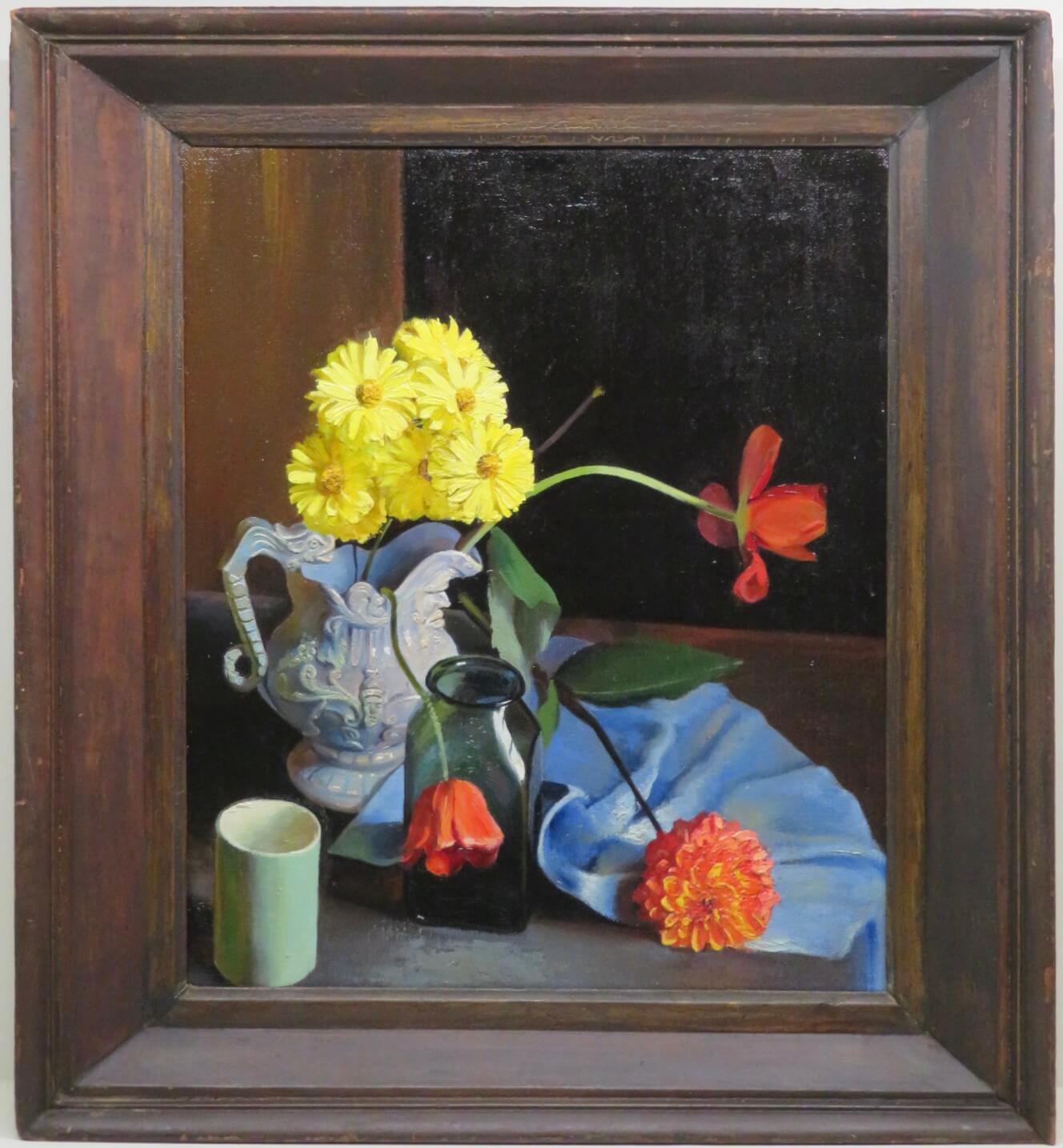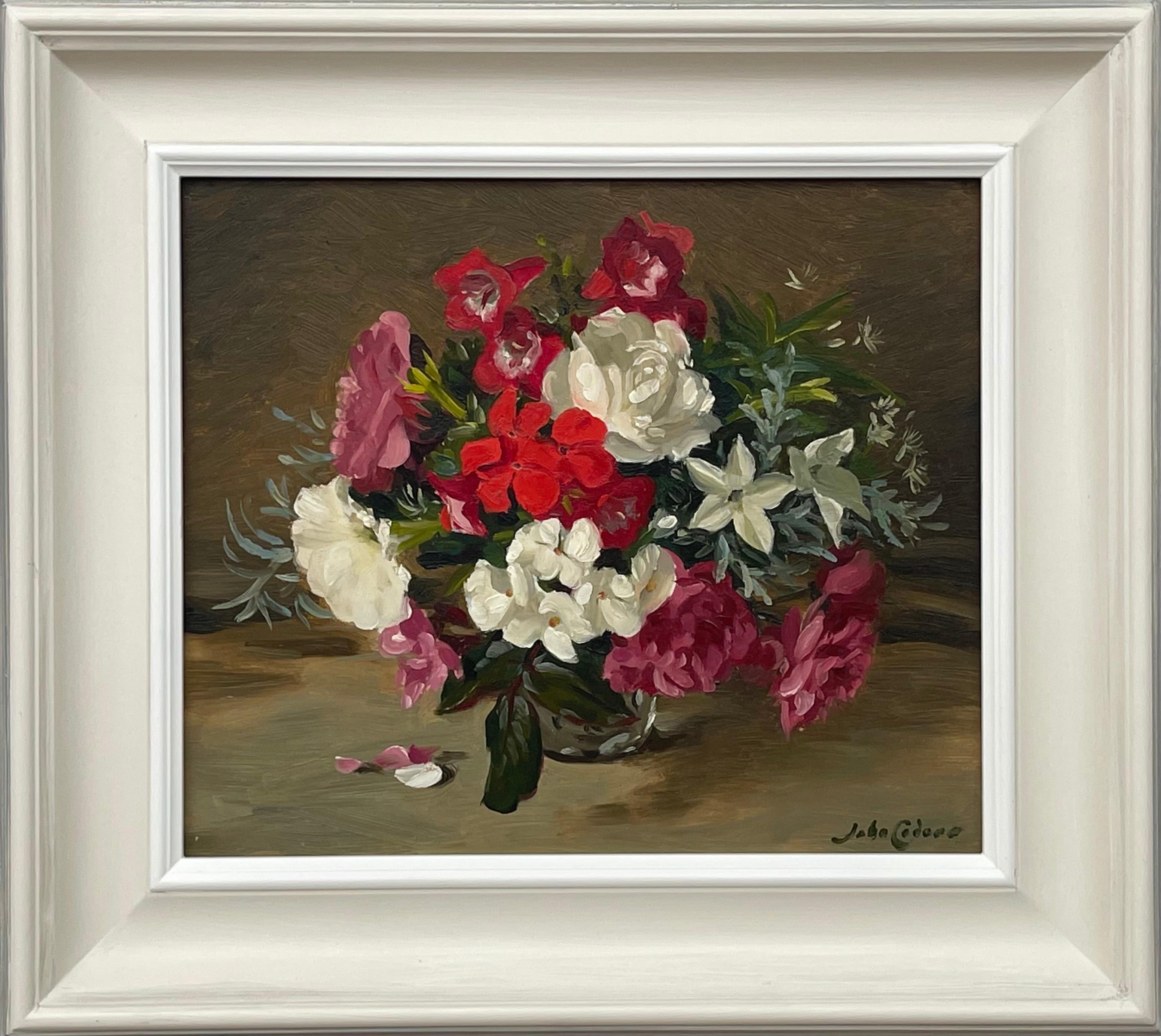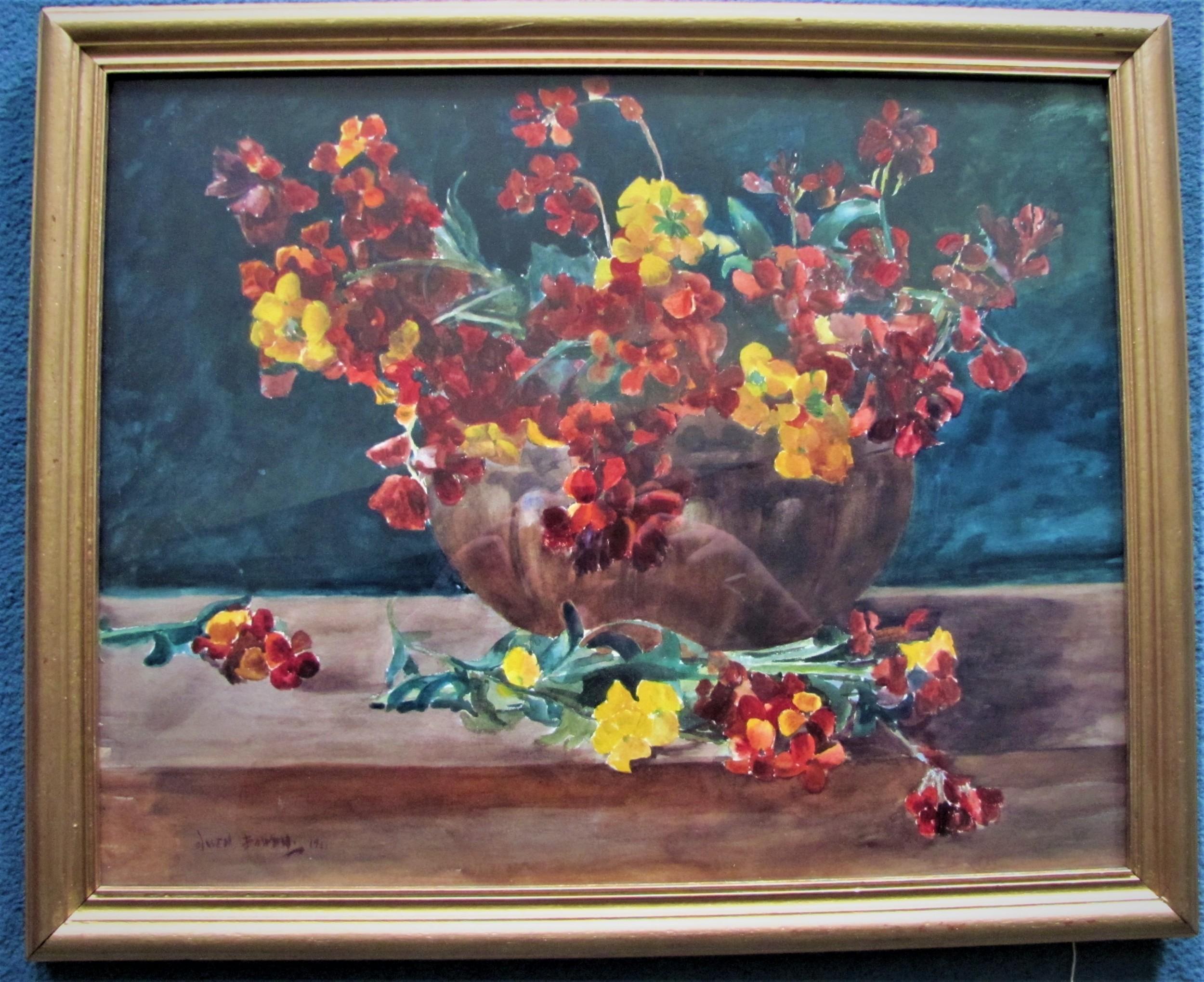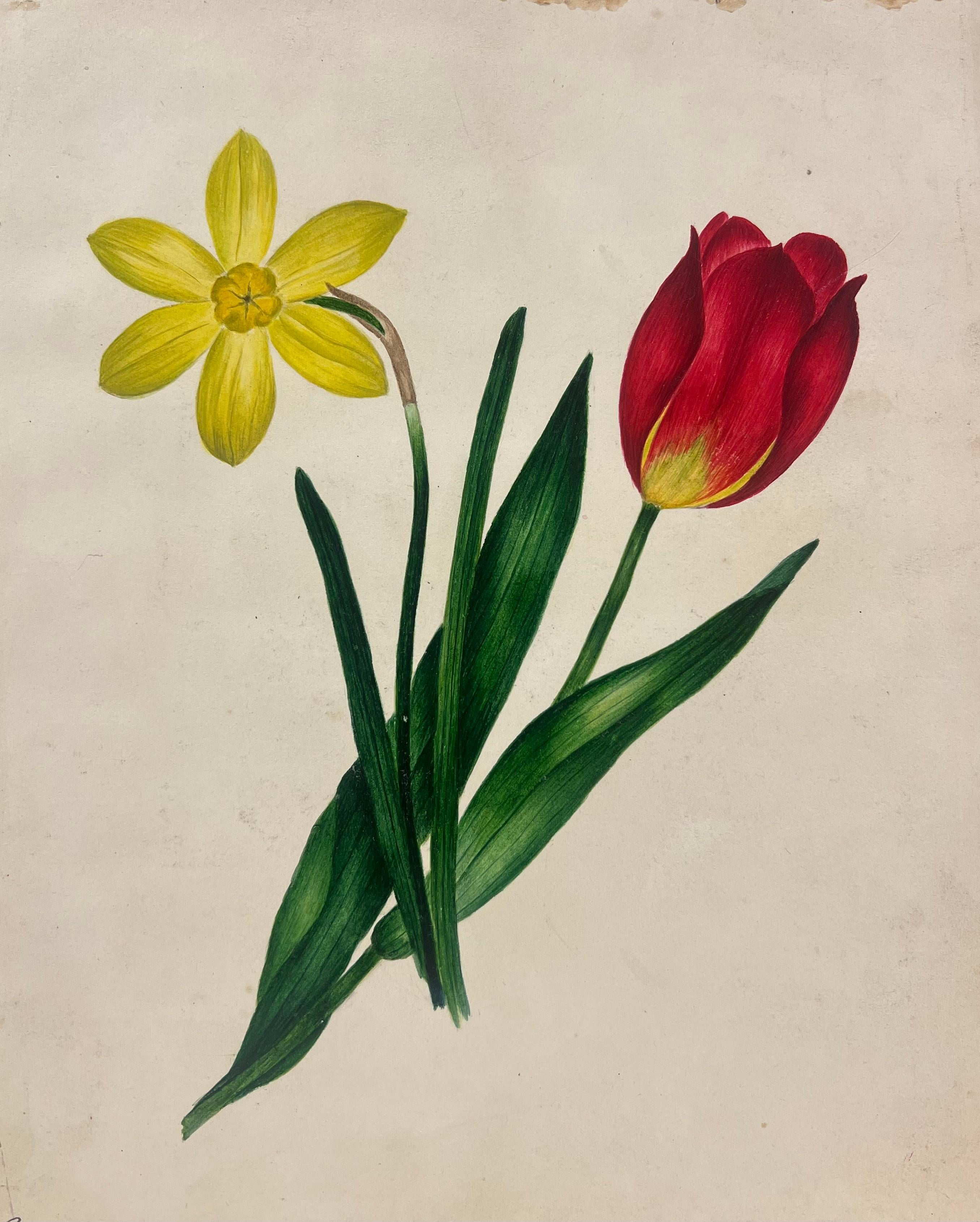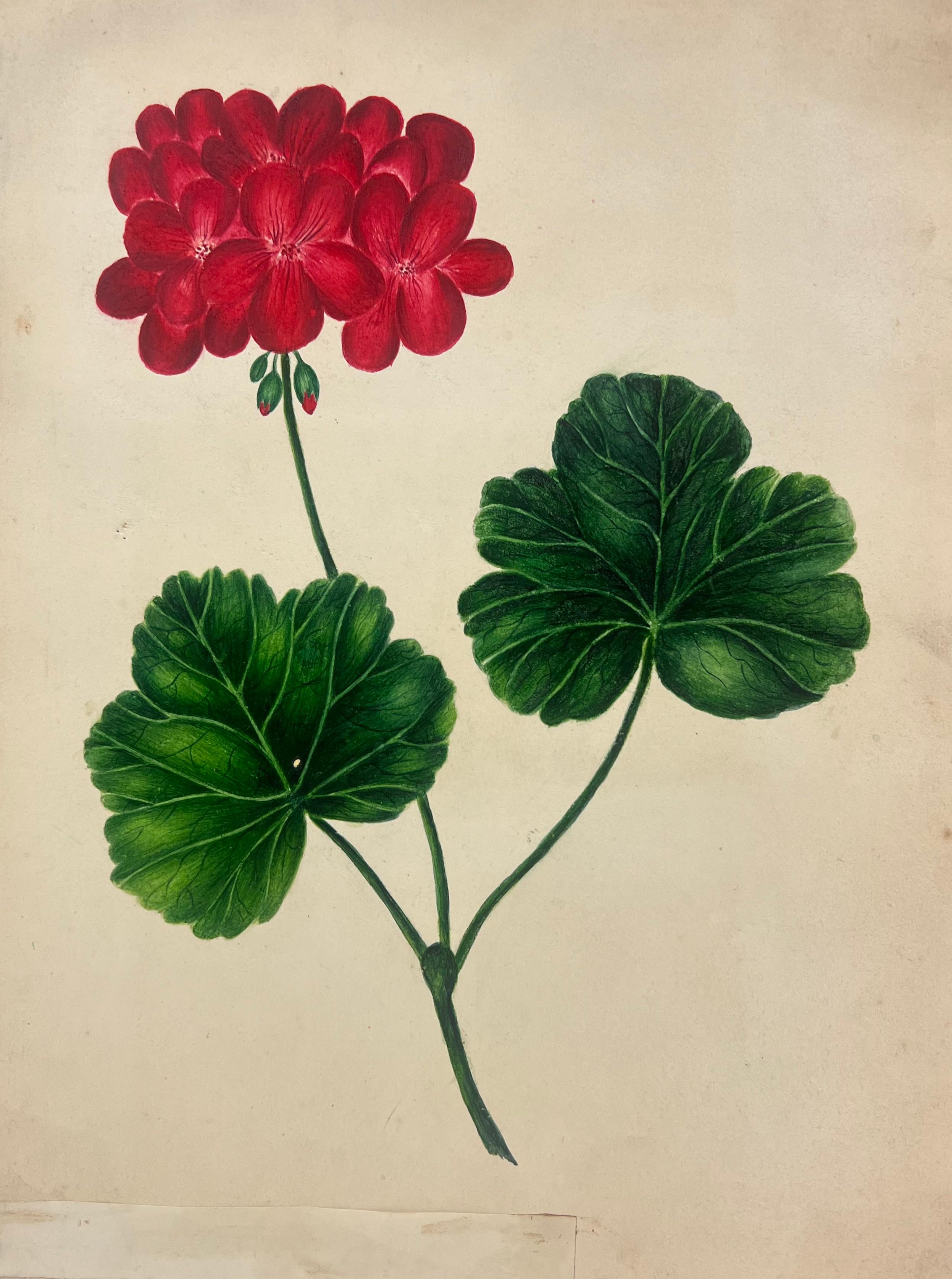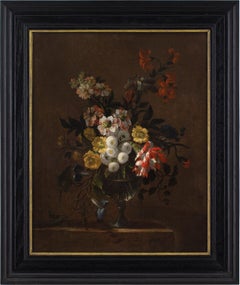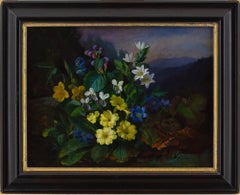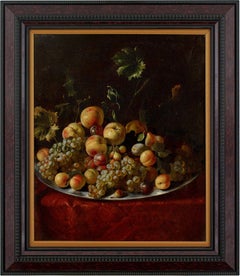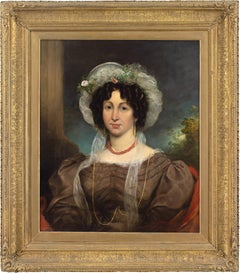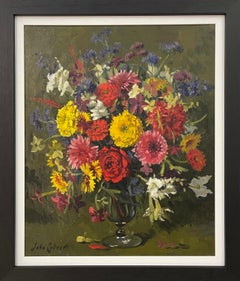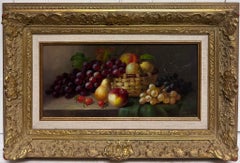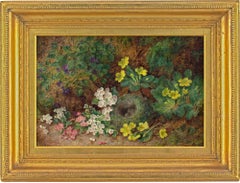
George Clare, Still Life With Primroses, Bird’s Nest & Mossy Bank
View Similar Items
Want more images or videos?
Request additional images or videos from the seller
1 of 13
George ClareGeorge Clare, Still Life With Primroses, Bird’s Nest & Mossy Bankc. 1880
c. 1880
About the Item
- Creator:George Clare (1853 - 1927, British)
- Creation Year:c. 1880
- Dimensions:Height: 19 in (48.26 cm)Width: 25 in (63.5 cm)
- Medium:
- Movement & Style:
- Period:
- Condition:Artwork presents well. Canvas relined. Frame with some light wear.
- Gallery Location:Cheltenham, GB
- Reference Number:1stDibs: LU2328212841342
About the Seller
5.0
Platinum Seller
Premium sellers with a 4.7+ rating and 24-hour response times
Established in 2017
1stDibs seller since 2023
230 sales on 1stDibs
Typical response time: 2 hours
Authenticity Guarantee
In the unlikely event there’s an issue with an item’s authenticity, contact us within 1 year for a full refund. DetailsMoney-Back Guarantee
If your item is not as described, is damaged in transit, or does not arrive, contact us within 7 days for a full refund. Details24-Hour Cancellation
You have a 24-hour grace period in which to reconsider your purchase, with no questions asked.Vetted Professional Sellers
Our world-class sellers must adhere to strict standards for service and quality, maintaining the integrity of our listings.Price-Match Guarantee
If you find that a seller listed the same item for a lower price elsewhere, we’ll match it.Trusted Global Delivery
Our best-in-class carrier network provides specialized shipping options worldwide, including custom delivery.More From This Seller
View AllCharles-Gilles Dutillieu (Circle), Still Life With Flowers & Glass Vase
Located in Cheltenham, GB
This exquisite early 18th-century French still life depicts a bouquet of vivid blooms set in an urn-shaped glass vase. It’s reminiscent of flower pieces by the French painter, Charle...
Category
1730s French School Still-life Paintings
Materials
Canvas, Oil
Franz Xaver Petter (Circle), Still Life With Alpine Flora
Located in Cheltenham, GB
This beautiful mid-19th-century Austrian oil painting depicts a still life with a decorous abundance of alpine flora and lively blooms. It’s sign...
Category
1850s Naturalistic Still-life Paintings
Materials
Canvas, Paper, Oil
Mid-17th-Century Neapolitan School, Still Life With Grapes, Peaches & Plums
Located in Cheltenham, GB
This elaborate mid-17th-century Neapolitan school still life depicts a pyramidal arrangement of fruit on a circular silver platter. It’s somewhat reminiscent of works by Luca Forte (...
Category
1670s Italian School Still-life Paintings
Materials
Canvas, Oil
George Clint ARA (Attributed), Portrait Of A Lady In A Brown Dress
Located in Cheltenham, GB
This early 19th-century half-length portrait attributed to British artist George Clint ARA (1770-1854) depicts a young lady wearing a beautiful brown dress, bonnet decorated with small flowers, gold earrings and coral necklace. Clint was a distinguished painter and mezzotint engraver predominantly known for portraiture and dramatic scenes.
Set before an evocative classically-inspired backdrop, she looks out from across the centuries with a composed demeanour. Adorned in the latest fashions, oversized ‘gigot’ sleeves, a delicately-poised bonnet, and a coral necklace for good luck. It’s a charming portrayal by a masterful hand.
Born at Drury Lane, in the heart of London’s West End, George Clint was destined to lead an exuberant life amid the spectacle of theatreland. His father, Michael Clint, was a hairdresser during a time of “hair pomatum, whalebone, wire, lace gauze, and feathers” - so young George would have encountered a variety of ‘characters’ during his childhood.
But despite these elevated surroundings, he soon discovered the darker side of London when thrust into the world of employment. Apprenticed initially as a fishmonger, he trained under a ferocious master who was known to beat him. The hours were unsocial, the conditions rank, and the work was brutal. He soon quit but subsequently found himself toiling for a corrupt attorney who demanded he undertake unscrupulous acts on his behalf.
Seeking a less volatile role, he turned next to house painting, at which he excelled. Commissioned, among other projects, to paint the stones of the arches in the nave of Westminster Abbey. Aside from an incident whereby he almost fell from the second story of a building, all was going well.
Following his marriage in 1792 to Sarah Coxhead, a farmer’s daughter, he began work in earnest as a painter of miniatures, determined to forge a career. Robert William Buss’ memoir celebrates Clint’s success as a miniaturist, stating that “great manual excellence was united with that chaste, delicate feeling for female beauty which characterised all Mr. Clint's portraits of ladies.”
Until this point, it appears he was predominantly self-taught, presumably constrained by a lack of finances. But from hereon in, his industrious nature coupled with several fortunate encounters, led to him developing an enviable talent for both painting and engraving. During the early 19th-century, the acquaintances one kept could make or break your fortunes and perhaps acutely aware of this, Clint’s ‘society’ was an ever-evolving circle of influential personalities.
He was “initiated into the mysteries of engraving” by Edward Bell (act.1794-1819) and produced numerous works after the foremost artists, such as George Stubbs, John Hoppner, and Thomas Lawrence. Following a commission from Lawrence, he struck up a long-term friendship.
Admired for his skill as a mezzotint engraver, he sought next to hone his technique in oils and, as with many aspiring portraitists, his first work in this respect was a depiction of his beloved wife. The pair were both delighted with it, yet over time Clint began to doubt himself and sought the validation of a superior hand - that of Sir William Beechey (1753-1839). However, paralysed with insecurity, he couldn’t face the potential criticism, so his wife took it instead - “with a child under one arm and the portrait in the other”. The result was immeasurably more positive than he’d envisaged and he became closely associated with Beechey until his death in 1839.
Numerous commissions followed from the landed gentry including Lord Egremont, Lord Spencer, and Lord Essex. But also from the theatrical community who would fill his studio at 83 Gower Street, Bloomsbury. His connections within the world of acting led to notable works such as ‘Malvolio and Sir Toby’ (from William Shakespeare's 'Twelfth Night', Act II, Scene iii)’ and ‘Harriet Smithson as Miss Dorillon, in Wives as They Were, and Maids as They Are’.
While his efforts in mezzotint included several contributions to JMW Turner’s Liber Studiorum.
As a measure of his success, Clint was elected an Associate of the Royal Academy in 1821 - a position he later relinquished for personal reasons. Today, he’s represented in numerous public collections including at The British Museum, Harvard Art Museums, The Met, V&A, Yale Center for British Art, and the National Portrait Gallery.
“The respect in which he was held, not only by his brother artists, but by an immense number of eminent men in various professions, and others of the highest rank, was the result of a rare combination of talent, candour, suavity of manner, and integrity of purpose”. [Obituary, 1854].
Housed in a period gilt frame, which is probably original.
Learn more about George Clint ARA in our directory.
Labels & Inscriptions: Supplier’s stencil from Rowney & Forster. The National Portrait Gallery holds a database of supplier’s stencils over the decades. The one here is also presented on two other works by George Clint. ‘Falstaff’s Assignation with Mrs Ford...
Category
1830s English School Portrait Paintings
Materials
Canvas, Oil
Mid-18th-Century English School, Portrait Of A Girl With A Posy
Located in Cheltenham, GB
This exceedingly charming mid-18th-century English oil painting depicts a girl wearing a red gown with a train over a white petticoat. She’s holding a posy or nosegay.
Evidently once commissioned for an English country house, the identity of this young lady remains a mystery. Her gown appears to be inspired by the popular ‘robe à la française...
Category
1740s English School Portrait Paintings
Materials
Canvas, Oil
Edward Robert Smythe, Figures & Horses On A Beach With Buildings
By Edward Robert Smythe
Located in Cheltenham, GB
This late 19th-century oil painting by English artist Edward Robert Smythe (1810-1899) depicts a picturesque bay with buildings, fishing boats, figures and horses. Smythe was a maste...
Category
1880s English School Landscape Paintings
Materials
Oil, Canvas
You May Also Like
Pocket Deep Blush Pear 1 and Pocket Ripe Banana by Dani Humberstone
By Dani Humberstone
Located in Deddington, GB
Pocket Deep Blush Pear 1 [2023]
Pocket Ripe Banana by Dani Humberstone [2022}
original
Oil paint on canvas
Image size: H:7 cm x W:5 cm
Complete Size of Unframed Work: H:7 cm x W:5 cm...
Category
2010s English School Interior Paintings
Materials
Canvas, Oil
English Native School, 19th Century, still life with fish
Located in Tricase, IT
English Native School, 19th Century, still life with fish
Oil on canvas 54x63 cm frame included.
Beautiful native English painting, representing an elegant still life of fish, cabba...
Category
1880s English School Still-life Paintings
Materials
Canvas, Oil
Still Life Oil Painting of Flowers in Glass Vase by 20th Century British Artist
Located in Preston, GB
Still Life Oil Painting of Flowers in a Glass Vase by 20th Century British Artist, John Whitlock Codner RWA (1913-2008)
Art measures 20 x 24 inches
Frame measures 25 x 29 inches
Presented in a high quality black wooden moulding with white insert. Signed on lower left, also inscribed with the artist name & date (1977) verso. Provenance with The Patricia Wells Gallery, Thornbury, Bristol
John Whitlock Codner (1913 - 2008) was a British painter. He exhibited at the Royal Academy and his works remain in major collections to this day. He was the son of the society painter Maurice Codner...
Category
1970s English School Still-life Paintings
Materials
Canvas, Oil, Cotton Canvas
Fine Classical Still Life Fruit in Wicker Basket Signed Oil Painting Gilt Frame
Located in Cirencester, Gloucestershire
Still Life of Fruit within a Wicker Basket
Jonny Gaston, British 20th century
signed and dated/ inscribed
oil on board, framed
framed: 15 x 23 inches
board: 10 x 18 inches
provenance...
Category
20th Century English School Still-life Paintings
Materials
Oil
$1,095 Sale Price
20% Off
Fine Classical Still Life Oil Painting Ornate Fruit in Elaborate Gilt Frame
Located in Cirencester, Gloucestershire
Ornate Still Life of Fruit
by Jonny Gaston, British 20th century
signed and dated
oil on board, framed
framed: 15 x 23 inches
board: 10 x 18 inches
provenance: private collection, UK...
Category
20th Century English School Still-life Paintings
Materials
Oil
$1,095 Sale Price
20% Off
English Original Painting The Trojan Horse Entering City of Troy
Located in Cirencester, Gloucestershire
Story of the wooden horse (The Trojan Horse entering Troy)
Percy Tarrant (1855 - 1934) British
oil on board, unframed
4.5 x 5.75 inches
inscribed in penc...
Category
Early 20th Century English School Still-life Paintings
Materials
Oil
$1,456 Sale Price
20% Off
